#celtic history
Text
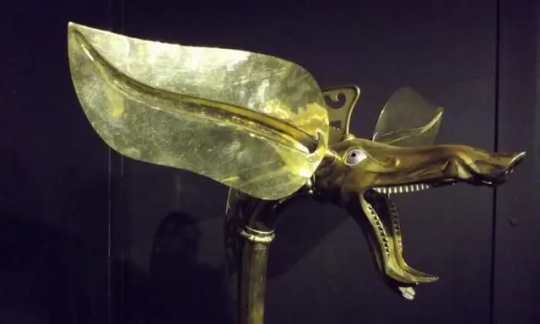

The 'Carnyx' Nightmare of the Roman Soldiers
The Carnyx was a brass musical instrument used as a psychological weapon of war by the ancient Celts between 300 BC and 200AD in western and central Europe and beyond.
The carnyx was once widespread throughout much of Europe, although only a dozen or so fragments are known to us.
It was carried by bands of Celtic mercenaries; it was present at the attack on the Greek sanctuary at Delphi in 279 BC; it defied Julius Caesar in Gaul; and it faced Claudius when he invaded Britain. They are even shown on a Buddhist sculpture in India, proof of the far-flung connections of the Iron Age world.
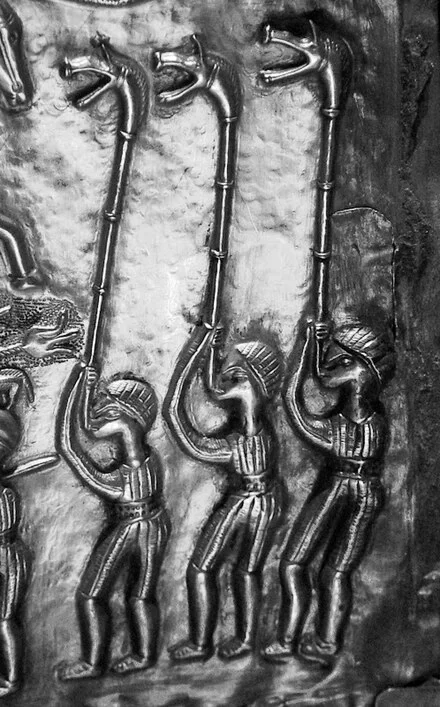
However, they were not only used by the Celts; they were also used by the Dacians in modern Romania. The term “Celtic” is a complicated one. The concept of a pan-European Celtic culture is a myth; rather, aspects of art and technology were shared across vast distances by diverse cultures. The carnyx was one example of this.
A 12-foot-long, thin bronze tube with right-angle bends on both ends made up the carnyx. The lower end ended in a mouthpiece, and the upper end flared out into a bell that was usually decorated to look like a wild boar’s had. Historians believe it had a tongue that flapped up and down, increasing the noise made by the instrument. The carnyx was played upright so that the boar’s head bell protruded well above the warriors’ heads. Its primary goal was to create more noise and confusion on the battlefield.
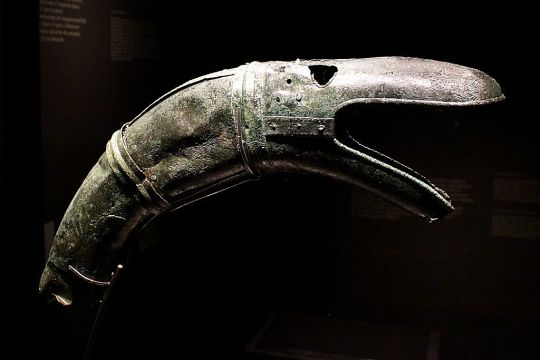
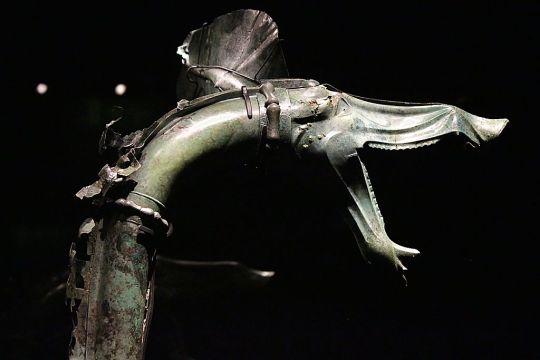

The Greek historian Polybius (206-126BC) was so impressed by the clamor of the Gallic army and the sound of the carnyx, he observed that “there were countless trumpeters and horn blowers and since the whole army was shouting its war cries at the same time there was such a confused sound that the noise seemed to come not only from the trumpeters and the soldiers but also from the countryside which was joining in the echo”.
And the Roman historian Diodorus Siculus wrote, “Their trumpets are also of a peculiar and barbaric kind which produce a harsh, reverberating sound suitable to the confusion of battle.”
Archaeologists discovered a hoard of ritually destroyed weapons in 2004, including a dozen swords, scabbards, spearheads, a shield, bronze helmets, an iron helmet shaped like a swan, a cauldron, animal remains, and seven carnyces. Before the Tintignac discovery, the remains of only five actual carnyces had been found.
The finest was unearthed in Deskford, Scotland in 1816. The Deskford carnyx only has the boar’s head bell and is missing the mane, tongue, and tubing. Images of Carnyx players have been found as well. A Roman denarius, dating from 48 BC bears a representation of a Carnyx. Three carnyx players are featured prominently on the Gundestrup Cauldron, which was found in a Danish peat bog.
One of the seven found at Tintignac, on the other hand, was almost entirely complete. The Tintignac Carnyx was broken into 40 pieces. When puzzled back together, it was found to be just an inch short of six feet long with a single missing section of the tube. The bell was a boar’s head with protruding tusks and large pointed ears. Once restored, the Tintignac Carnyx proved to be the first virtually complete carnyx ever found.
By Leman Altuntaş.
Music video by John Kenny.
#The Carnyx#The 'Carnyx' Nightmare of the Roman Soldiers#Iron Age war trumpet#ancient artifacts#archeology#archeolgst#history#history news#ancient culture#ancient civilizations#celtic mythology#celtic history#roman history#roman empire#roman legion
3K notes
·
View notes
Text
Xenophobia in Celtic nations' independence movements: A guide to the red flags
This is something I've wanted to write about for a long time - I want to go over this in more detail when I can. But for now a short guide to the most egregious red flags is warranted imo.
'Celtic nations' refers to the modern regions where Celtic languages are still spoken, namely Ireland, Wales, Scotland, Isle of Man, Cornwall and Brittany. Its important to know that these places are called Celtic not because of who lives there, but because of the languages which have survived there. Its a common error to think 'Celtic nations'= Celtic people. In my field (Celtic Studies) Celtic is generally only applied as a descriptor in the sense of language family.
Because of the popular misinformation 'Celtic nation' = 'Celtic' population, xenophobia rears its ugly head in multiple corners of the various Celtic nations' independence movements. Left unchecked, this xenophobia develops into outright racism. Which is why it's important to recognise these red flags when you see them.
'Acceptable Targets':
The reason why some of the xenophobia goes unchecked (and develops into worse kinds) is because a lot of xenophobia in the Celtic nations is aimed at 'acceptable' targets - which no-one bats an eye about when this rhetoric is deployed. But were it deployed against any other nationalities, it would immediately obvious that it isn't acceptable. Now, I will preface this with that there's nuance with these nationalities and there's something to be said about whether some of it is 'punching up'. However, because of how accepted it is to be casually xenophobic against these privileged groups, it is signalled through that that it's okay to be xenophobic in general to less privileged groups. I feel its important to address the first rung on the ladder before tackling any higher up.
Without beating around the bush, I'm talking about the English (and French. But I know more about the English so that's where my focus will be).
Yes, pro-independence anti-English memes and jokes can be funny. Most of them do stay on the side of punching up and many raise important points on the effects of English imperialism on the Celtic languages. However, there's a fine line between punching up and voluntarily using and wielding xenophobic arguments and rhetoric to get one up on the English. This, in my view, only paves the way for worse kinds of xenophobia and to me is a canary in the coal mine situation. But I also cannot talk about this without also making it clear that it is possible to recognise that sometimes a line is crossed without validating English persecution complexes à la 'you can't even say you're English these days' or similar nonsense. Both things can be true at once: Casual xenophobia against the English does exist, however, its existence should not be used to validate English persecution complexes. On the contrary, we should fight that also.
The reason why this canary in the coal mine has gone unnoticed is because of the reluctance to actually point out xenophobia against the English in pro-independence movements due to fear of accidentally validating the claims Englishness as a concept is under threat or due of fear of ostracism from Celtic nationalist movements. There is little danger of actually validating the former sentiment, however, because of a crucial fact. The people in the Celtic nations being casually xenophobic and the English with persecution complexes have one massive trait in common: they're both xenophobic in incredibly similar ways. If it's hard to tell apart an English nationalist from one in a Celtic nation if you were to swap the target of their ire, congratulations, your movement has a xenophobia problem /s.
English nationalist: We should tighten controls on our borders to keep all those foreigners and immigrants out. Make England English again.
(Xenophobic) Celtic nationalist: We should fight for our independence so we can tighten controls on our borders to keep all those foreigners and immigrants out. Make [insert Celtic nation] [nationish] again.
Many Celtic nationalists will also present ahistorical facts or manipulated versions of history in order to seem more valid or legitimate. It's a massive red flag when someone's grasp of history seems more emotional than grounded in historical fact. Using Welsh history as an example, I've seen this type of Celtic nationalist blatantly lie about historical figures, literally deface ancient castles in Wales based on a poor grasp (and respect for) history and conflate modern English and Welsh identity with ancient entities which do not map neatly 1:1. The ahistory presented by individuals or groups fancying themselves as leaders in their respective movements are unquestioningly accepted by others in the Celtic nationalist movements. This creates a manufactured mythology, belief in which confers in-group status and out-group status. A mythology which reinforces beliefs already present in the movement - such as the right to be casually xenophobic as long as it's against the 'right people' and as long as it is done in the name of protecting or advocating for their nation.
It was never going to stop at English people:
Once casual xenophobia is established as being tolerated, expected or even encouraged in the various independence movements, it enables xenophobes to be bolder in their rhetoric. Because casual xenophobia against 'deserving' nations like England is dismissed as 'just banter' and not taken seriously, it sends a signal to everyone in that movement that xenophobia is okay if its used against the 'right groups. While it may roll like water off a duck's back to the average English person, other, more vulnerable people do not fare so well.
To use an actual example I've seen out in the wild, some people will claim that you can't be considered Welsh unless you were born in Wales. Many people won't question this or interrogate the implications. Firstly, this comes back to how Celtic nationalists can often sound exactly the same as English nationalists (blood and soil nationalism is common to English and Celtic nationalisms). Secondly, this rhetoric also simulataneously invalidates several ostensibly Welsh people, such as Saunders Lewis (born in Liverpool) and Jan Morris (born in Somerset). In most cases, anyone who lives in X country / is a citizen of X country can or should be able to describe themselves as Xish.
The perennial anxiety of Celtic nationalists is that because most of the Celtic nations (excepting the Republic of Ireland) are constituent parts of a state (either the UK or France) and not independent entities in their own right, there is no control over borders and there is no system by which someone can be made a Welsh, or Breton or Cornish etc. citizen - and thus no way to control [nation]ness via those means. When Celtic nationalists agitate for independence, it's important to interrogate their motivations. If they are motivated primarily by a desire to control who is considered Xish and who isn't, that's a red flag.
English nationalists have this citizenship problem too, since England is not an independent nation, but a country within the UK. However, most English nationalists overlap heavily with British nationalists in general, so most agitation for 'sovereignty' gets channelled into British nationalism. This is one of the key differences between English and Celtic nationalists - the former is usually very fond of the United Kingdom, the latter detests it and wants to secede. This leaves Celtic nationalism in a tight spot - there is a desire for self determination which is currently impossible to achieve or enforce. And that makes a lot of Celtic nationalists anxious. And that anxiety leads to feeling like they need to prove their commitment to the cause by performing xenophobia, which validates their in-group status while simultaneously establishes the out-group.
A person born in England but who lives in Wales, perhaps speaks Welsh or considers themself Welsh will, in general, be mostly unharmed by 'you have to be born in Wales to be Welsh' rhetoric. But you know who might be? So many immigrants who consider themselves Welsh who make Wales a great place to be. Immigrants in Wales (especially nonwhite immigrants) may feel excluded by such rhetoric. It's almost on par with "where are you really from" sentiments. And this is an entirely self-defeating kind of rhetoric for Celtic nationalists to take up. Here we have thousands upon thousands of people who willingly want to live and work in Celtic nations - many of whom will also learn the language - undoing centuries of English and French propaganda that diminished the worth of Celtic nations and their languages* - and Celtic nationalists want to exclude these people from claiming the nationality of their adopted nations because... they didn't happen to be born here. Got it.
Xenophobia, once established, cannot be contained:
Xenophobia ripples outwards. Once it is established it is okay to be xenophobic to certain groups, other groups begin to be included in the xenophobia. This then has the potential to expand into outright racism. In Ireland, for example, there's significant amounts of antiblack racism present in the nationalist movement. Very recently, due to the actions of the UK government over the Rwanda Plan, the Republic of Ireland has gotten frustrated at the amount of immigrants attempting to reach their shores after abandoning attempts to claim asylum in the UK (out of fear of being sent to Rwanda). There's a "we don't do that here" attitude in many Celtic nationalist movements with regards to English imperialism, xenophobia, racism and anti-immigration. But not only do we do that here - it's worryingly integral to some people's visions for their nation's independence! You end up with complacency because many will take a literal no true Scotsman approach to Celtic nationalism and pretend that such people aren't really part of the movement. The problem is, is that they are here and regularly hijack otherwise unproblematic movements.
There are many routes through which Celtic nationalists can get radicalised into becoming massively xenophobic in order to fight for their respective nation's independence. All of them stem from real, legitimate problems in each nation whose cause has been misidentified.
One way is through opposition to second homes. On all counts, a noble goal and a very legitimate problem which I myself am invested in fighting. But the ways in which this problem is addressed often veer into questionable territory. If the focus is on "how dare those people from over there come over here" instead of "how dare a very small group of people monopolise housing for holiday lets at the expense of locals" there's a problem. The problem isn't people not from [place] holidaying there, it's the people who monopolise housing for their own profit which reduces housing available for locals and destroys community. In Aberystwyth I've heard some appalling sentiments against people from the Midlands - borderline if not outright classism around their appearances, mannerisms and accents. Sneering at random families visiting the beach isn't going to help anything and only exposes thinly veiled bigotry in whoever is making such remarks.
As already mentioned, another way radicalisation into xenophobic Celtic nationalism can occur is through mythologised 'history' which has been manipulated to suit the needs of the person or people making the claim. Lately, I've been seeing a rise in Welsh 'history' groups rife with disinformation and outright misrepresentation of historical events which are so designed to keep people angry about historical injustices against Wales. There are plenty of real historical injustices which can be talked about - but the 'history' presented in these groups is often fabricated or twisted to make things worse than they were or are stripped of nuance which perhaps paints certain historical figures less favourably than the authors would have liked. Not to mention superimposing modern nationalism onto ancient peoples is also just accepted as fine to do. Here is a screenshot of a Welsh 'history' group shared in a Welsh learning group I'm in. I can and will do a deeper dive into this topic in particular when I can. For now I'll mention the most important things to notice:
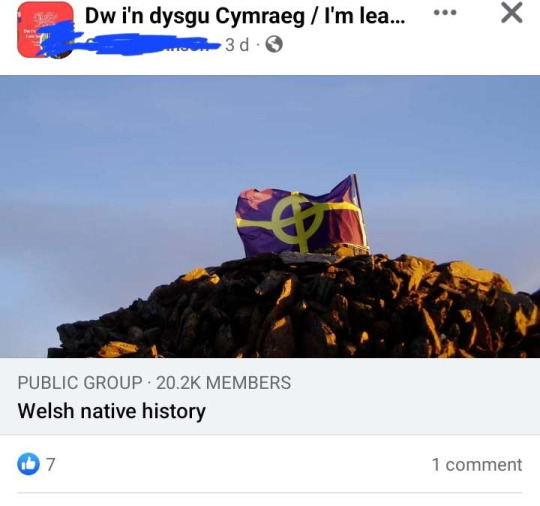
As mentioned in one of my other posts on this topic - the term 'native' is frequently misused in a Celtic context. Here, it sets up the basic in-group/out-group dynamic from the start and creates a setting in which members of the group are privy to the 'real' history while others are not. A brief glance at posts in this group makes that quite clear. The flag in the image is a representation of Y Groes Naid - supposedly a piece of the True Cross kept at Aberconwy. Now, there are ways to depict this cross which aren't so dogwhistley - so I'm immediately suspicious this image was chosen on purpose. Right down to the fact there's plausible deniability if anyone tries to point out how much the flag looks like the white supremacist Celtic Cross symbol, since it's Y Groes Naid, right?
I will wrap this up with that as a Celticist, I see far too many people uncritically supporting certain Celtic nationalist movements simply because they are pro-independence. Turning a blind eye to 'acceptable' xenophobia and choosing to believe ahistorical versions of history because it better suits their politics. This must be resisted - we can advocate for the independence of Celtic nations which desire it without relying upon these means. It can be done, I promise. But the path to that means dismantling systems of oppression which exist within Celtic nationalist movements. Awareness of the problem in the first place is a good place to start.
Reblogs and comments are welcome on this post to raise awareness of the issue and actually talk about these things.
Diolch am darllen!
#cymblr#tymblr#Celtic#celtic studies#celtic languages#celtic nations#racism cw#(in case)#xenophobia#anti xenophobia#antiracism#celtic history#celtic mythology#welsh nationalism#annibyniaeth#annibyniaeth wrthfasgaidd#antifascism#Ireland#Wales#Scotland#Isle of Man#Cornwall#Brittany#I didn't have time to touch on pan-celtic nationalism but that's a whole nother beast#reblogs welcome#long post
144 notes
·
View notes
Text
youtube
Why did Celts of the British Isles build over 4000 hill forts during the Iron Age? The answer may have something to do with the conflict between those Bronze Age cowboys who maintained traditional pastoralist transhumance lifestyles, and those in the forts who depended more on arable farming. This can also explain why British Celts were the most lactose tolerant people on Earth at that time. In this documentary I visited Barbury Castle in Wiltshire, Castle an Dinas in Cornwall and several other magnificent Iron Age hill forts.
#hill fort#celtic paganism#british history#welsh history#iron age#roundhouse#brythonic#brythonic polytheism#lactose intolerance#history documentary#ancient history#ancient britain#celtic britain#celtic history#Youtube
33 notes
·
View notes
Text
I was thinking about how allot of legends of Saint Patrick are basically him demonstrating that the Christian god is more powerful than local pagan deities to get converts and it made me think of like anime community power scalers and it made me think of these memes to create as hypothetical memes in early Middle Ages Irish social media:
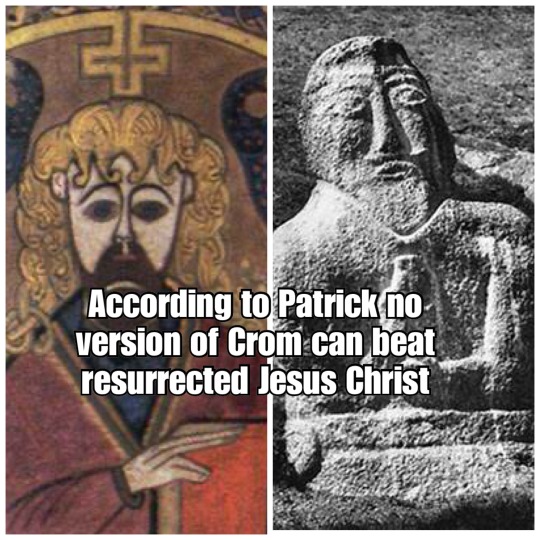

I apologize if there’s anything wrong with the Irish language one colonialism did a number on it even in Ireland so it didn’t exactly survive in the diaspora for me so I used google translate 😅
#shut up alex#personal#celtic#irish american#irish#ireland#saint patrick’s day#saint patrick#history#history memes#irish history#irish history memes#irish culture#gaelic#celtic history#my memes#homemade memes#original memes
37 notes
·
View notes
Text
I was today years old again when I had discovered that "Crime" was a very different thing from "Tort" when researching Celtic Law

[....]

(Source: Wikipedia)
6 notes
·
View notes
Text
Celtic Customs: Hair
by autumn sierra
I’d like to share a bit about the significance of hair in Celtic culture, specifically how it pertains to myself. I wouldn’t necessarily call this a folk practice, just a general custom. (This isn’t an article just a general post based on a prompt.)

In ancient times, the Celts (be they Irish or Scottish or Pictish, maybe Welsh) were very well known for their grooming and cleanliness. They were the ones that inspired the use of soap for the Romans and Anglo-saxons. With this, there was an incredible amount of importance placed on one’s hair.

Many Celts carried ivory or wooden combs to maintain their hair, preventing mats, and washed it regularly. They developed intricate braids along with normal three strand plaits in order to keep their hair long and healthy. Later on, it became popular for men to cut their hair into a bowl shape in the front and short in the back—the “glib”—but for the longest time in history, they were most known for their long, well kept hair.

It’s an ongoing debate whether the Celts incorporated the use of locs in their customs. In some cases, I would argue that yes, locs were present due to lack of resources among the lower class. However, it wasn’t the standard as many Irish and Scottish peoples regularly bathed and groomed themselves. Some may have also received “fairy locs”: matted and woven sections of hair made by the mischievous sídhe.

(This is not cause for the accusation of cultural appropriation, as there are many types of hair patterns from 1a-4C, and such ideas didn’t even exist in early centuries. Those with curly, kinky, or coily textures are more likely to have naturally occurring locs which can be maintained through what we now know as crocheting, and twisting, etc. Certain curl patterns are not exclusive to the African, Baye Fall, Rasta, and other communities considered black. For these reasons, locs—not necessarily “dreads”, since there is cultural significance there—have also been worn by Indigenous American (and possibly Inuit) peoples, Aztecs, Minoans, the Polish, Indigenous Australians, Tibetans, and Indians throughout history.)

Long hair is said to be a representation of spiritual growth, connection to the self and the natural world. The head was considered the vessel in which the soul resides in ancient times, specifically in Celtic lore. This is evidence for why warriors would take the heads of their enemies in battle, as a symbol of victory over another’s soul. (Quite brutal, indeed.)

My hair is also an insanely important part of my identity, and I’ve adopted similar practices of maintenance as my Scottish and Irish ancestors. I’m now recognized by family, friends, and coworkers for my hair’s length, vibrancy and shine. I’ve also realized some symbolism of plaits, the three strands representing the body, mind, and spirit. It’s great to meditate on the interconnectivity of these while braiding. I usually braid it like this, or keep it twisted into a bun or hair pin to keep it from matting in the breeze. Somehow, it seems the wind has become more enticed with tangling my hair as of late. Maybe the sídhe found their way to me only to tangle my hair!
#ireland#scotland#culture#customs#long hair#haircare#hair care#celtic#celtic history#history#irish history#scottish history#witchblr#witch#witchcraft#folk witchcraft
7 notes
·
View notes
Text
AONGHUS
Aonghus was the Irish love god. His father was Dagda, the father of the gods and the protector of druids, and his mother was the water goddess Boanin. Rather like Zeus, Dagda deceived Boann's husband and lay with her. The monks who wrote down the Irish sagas tried to legitimize the birth by making Boann the wile of Dagda, but it is obvious that Aonghus was a divine love-child Aonghus was handsome and four birds always hovered above his head which were said to represent kisses. Birds also feature in his courtship of Caer, a girl of divine descent who came from Connacht and lived as a swan. Her father, Ethal, was one of the Tuatha de Danann. He seems to have been reluctant about the marriage until Aonghus' father, Dagda, made Ethal his prisoner. It was finally agreed that Aonghus could marry Caer provided he could identify her and she was willing to be his bride. On the feast of Samhain, Aonghus found Caer swimming on a lake with a hundred and fifty other swans. He instantly recognized her and she agreed to marry him.
An interesting tale that has attached itself to Aonghus con-cers his foster-son Diarmuid ua Duibhne, or "Diarmuid of the Love Spot". This attractive young man received a magic love spot on his forehead from a mysterious girl one night during a hunt. From then on, no woman could ever see Diarmuid without loving him. This included Grainne, the princess who had been promised by the High King of Ireland to his Fenian commander Finn Maccool. Aonghus saved the lovers from the great warrior's wrath, but he could not protect Diarmuid from the fate given to him at birth by the gods, that he should be killed by a magic boar.
Nevertheless, Aonghus brought Diarmuid's body back to his own palace at New Grange, on the banks of the River Boyne, where he breathed a new soul into it so that he could talk to his foster-son.
5 notes
·
View notes
Text
So I got a tarot deck with an instructional/historical book from a garage sale for a whopping total of one dollar, and now I’m learning how to write and interpret Celtic Ogham!
Apparently it was also used as a form of sign language of the hands, or of the fingers positioned across the bridge of the nose or shin bones. Druids were forbidden from communicating with it in some contexts because it was such a multifaceted, contextual language that it was easy to weave in hidden messages; thereby giving Druids the tactical advantage.
4 notes
·
View notes
Text
I’d most probz shit myself
#history#celtic#celtic history#roman heritage#roman empire#heritage#english history#english heritage#irish heritage#irish history#Roman invasion of Britain
2 notes
·
View notes
Text

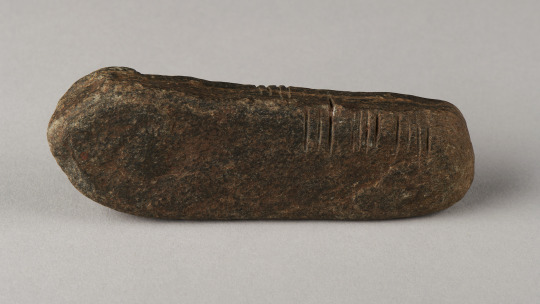
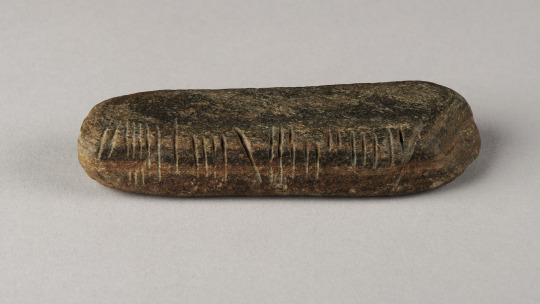
Stone With 1,600-Year-Old Irish Inscription Found in English Garden
A geography teacher, Graham Senior, stumbled across a rock with mysterious incisions while tidying his overgrown garden in Coventry, England. The discovery of a small stone carved with an early form of Celtic script has caused excitement among archaeologists.
The rectangular sandstone rock was found by Graham Senior in Coventry during lockdown in 2020 while he was weeding, but its true value was only recently understood.
The 11-centimeter-long and 139-gram rectangular sandstone rock had cryptic inscriptions on it that suggested a history spanning over 1,600 years, all written in the mysterious Ogham alphabet.
Ogham is an early medieval alphabet used to write the Archaic Irish language from the 4th to the 6th century and Old Irish from the 6th to the 9th century. It is usually found carved on stones in Ireland, Wales, and western Britain. It was the first written language in Ireland. The majority of the 400 or so known inscriptions from the Archaic Irish period are family name pillars that were built to announce land ownership.
Ogham is an extremely unique writing system among all writing systems, with lines arranged in groups of one to five only. The stones provide insight into the Irish language before the use of the Latin insular script.
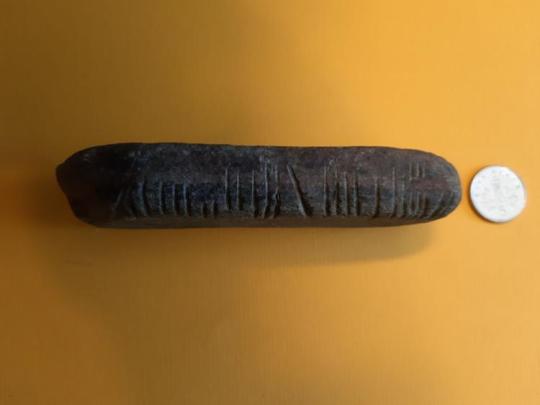
Finds liaison officer for the Birmingham Museums Trust, Teresa Gilmore, told RTÉ’s Morning Ireland that the discovery on an Ogham stone in the English midlands was a rare find.
“These finds do not turn up in the midlands. The bulk of Ogham inscriptions are found over in Ireland,” she said.
Professor Katherine Forsyth of Celtic Studies at the University of Glasgow conducted additional research that shed more light on the stone’s provenance. Her findings point to a period suggesting a timeframe ranging from the fifth to sixth centuries, with the possibility of an even earlier date in the fourth century.

The stone is inscribed on three of its four sides. The inscription on the stone, “Maldumcail/S/ Lass,” puzzled researchers, with interpretations pointing towards a version of the personal name Mael Dumcail, but the meaning of the S and LASS is unclear. Given the usual purpose and significance of ogham stones, it may be a location reference.
Theories regarding the origins of the stone abound, with speculations ranging from migration patterns to the presence of early medieval monasteries in the region.
The rock will be displayed at the Herbert Art Gallery and Museum in Coventry, to which Senior has donated it permanently. It will feature in the forthcoming Collecting Coventry exhibition, which opens on 11 May.
By Oguz Kayra.

#Stone With 1600-Year-Old Irish Inscription Found in English Garden#Coventry England#Celtic script#sandstone rock had cryptic inscriptions#Ogham alphabet#ancient artifacts#archeology#archeolgst#history#history news#ancient history#ancient culture#ancient civilizations#celtic history#irish mythology#celtic art
201 notes
·
View notes
Text


‘The Sea Kingdoms: The History of Celtic Britain and Ireland’ by Alistair Moffat
#reading#books#sea kingdoms#Alistair Moffat#Celtic history#british history#scottish history#welsh history#irish history#Manx history#Cornish history#celtic culture
5 notes
·
View notes
Text
does anyone know resources for me to learn more about celtic traditions from before christianity? i have predominantly celtic ancestry and want to learn more about it. i also have nordic ancestry and i will probably learn about heathenism but im focusing on the celtic side now since i have more celtic than nordic.
22 notes
·
View notes
Text
DID YOU KNOW???
Did you know? The word “fahrenheit” originates from the ol’ english “fairer-than-height”, which was an insult aimed towards cisgender women, who were Fair but had no Height. (In the middle-ages, height was needed to survive the harsh winters)
Talk about a cold shoulder! 🥶
#etymology#word origins#english#old english#middle english#language#linguistics#history#european history#british history#celtic history#facts#factoid#fun fact#trans rights#trans pride#2slgbtqia+#lgbtqia#lgbtq+#trans history
11 notes
·
View notes
Text
hey! irish tumblrians. i need help, i’m trying to research irish historical culture, particularly in tandem to clans and how they work, but the pre-christian stuff in general! If anyone has any resources please help me find them! I want to make a story based off of this as i’ve always been drawn towards my irish family, but never had a chance to reconnect.
(I’m not fully irish myself and will never consider myself irish but i do want to have a relationship with all sides of my heritage because my family on both sides has lost any cultural connection & that bothers me)
My current ideas are inspired by cats, as i (creatively) work easiest with nonhumans, and i am debating making a show out of whatever i come up with one day.
definitely going to incorporate mythology inspiration, but i know more about irish paganism (not much in broad terms) than i know about the rest of pre-christian irish culture.
Any form of response is okay! I honestly just think exploring this creatively would be a fun way to learn it.
#xenomoggy#xenofiction#irish history#irish culture#resource search#irish resources#celtic culture#celtic history
10 notes
·
View notes
Text

Guess you could never say, the ancient Celtic people ever went over their heads!
💀😂💀
#history#ancient celts#heads#family heirloom#skulls#ancient#celtic history#gaul#ancient romans#france#ancient practices#european history#celtic#ancient culture#celtic mythology#ancient history#spooky facts#classical age#french history#ancient warfare#cedar oil#history mystery#nickys facts
7 notes
·
View notes
Text
Y’all, I was today years old when I learned that Merry’s name wasn’t some crap that Jonald made up…it was actually a real life name! Meriadoc is a super old Celtic name that goes back to at LEAST the 6th century with Saint Meriasek (alternate spelling) and the legendary founder of Brittany, Conan Meriadoc. The more you know.
#history#celtic history#Celtic#brettonic#Bretons#jrr tolkien#tolkien#lotr#lord of the rings#hobbits#etymology#Conan meriadoc#merry brandybuck#meriadoc brandybuck#name history#names
12 notes
·
View notes